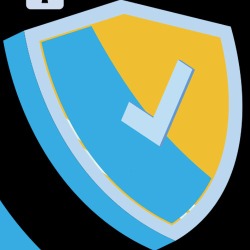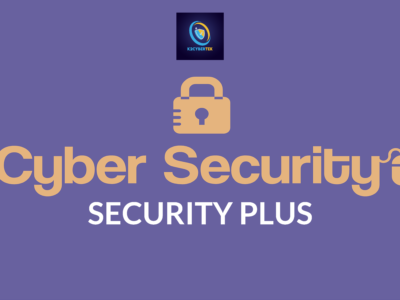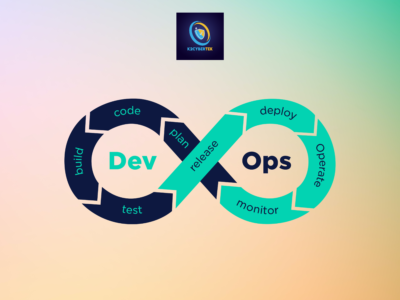
Overview
Overview
TARTEGTED JOB ROLES
Cloud Security Engineer
AWS Cloud Security Engineer
Okta (IAM) Engineer
Course Features
- Lectures 250
- Quiz 0
- Duration 17 weeks
- Skill level All levels
- Language English
- Students 65
- Certificate No
- Assessments Yes
Curriculum
Curriculum
Curriculum
- 25 Sections
- 250 Lessons
- 17 Weeks
Expand all sectionsCollapse all sections
- ZOOM MEETING LINK1
- GENERAL COURSE INTRODUCTION1
- MODULE 1: INTRODUCTION TO CYBER SECURITY15
- 3.1Notes
- 3.2Video
- 3.3Cybersecurity Principles and Objectives
- 3.4The CIA Triad (Confidentiality, Integrity, Availability)
- 3.5Core Cybersecurity Principles
- 3.6The Castle-and-Moat Security Model (Traditional Perimeter Security)
- 3.7Zero Trust Framework (Modern Security Approach)
- 3.8Perimeter Security vs. Zero Trust: A Comparative Analysis
- 3.9Cybersecurity Frameworks and Standards
- 3.10Compliance Frameworks and Regulations
- 3.11Security Tools and Technologies
- 3.12Job Market Outlook
- 3.13Interview Questions
- 3.14ZeroTrust Lab:
- 3.15Hands-On Lab:
- MODULE 2: NETWORKING AND SECURITY FUNDAMENTAL20
- 4.1Notes
- 4.2Video
- 4.3Notes 2
- 4.4Definition of Computer Networks
- 4.5Importance of Computer Networking
- 4.6Early History of Computer Networking
- 4.7The Internet and Its Growth
- 4.8The OSI Model (Open Systems Interconnection Model)
- 4.9Data Flow Through the OSI Model
- 4.10Tools for Network Troubleshooting
- 4.11Data Encapsulation and Decapsulation
- 4.12TCP Three-Way Handshake
- 4.13Network Topologies and Network Ports
- 4.14Network Structures & Types
- 4.15Public vs. Private Networks
- 4.16IPv4 Subnetting Basics
- 4.17IT Protocols and Network Communication
- 4.18Domain Name System (DNS)
- 4.19Hands-On Lab: Network and Traffic Monitoring
- 4.20Resume and interview questions
- MODULE 3: DEEP VULNERABLITY MANAGEMENT17
- 5.1Notes
- 5.2Video
- 5.3Introduction to Vulnerability Management
- 5.4Importance of Vulnerability Management in Cybersecurity
- 5.5Benefits of Vulnerability Management
- 5.6Vulnerability Lifecycle
- 5.7Common Vulnerability Types
- 5.8Vulnerability Management Frameworks
- 5.9Tools for Vulnerability Management
- 5.10How the NVD Works
- 5.11Understanding CVSS (Common Vulnerability Scoring System)
- 5.12Network Vulnerability Management
- 5.13Application Vulnerability Management
- 5.14Database Vulnerability Management
- 5.15Cloud Vulnerability Management
- 5.16Container Vulnerability Management
- 5.17Labs and Hands
- MODULE 4: CYBER THREATS, VULNERABILITIES, AND ATTACK TECHNIQUES17
- 6.1Notes
- 6.2Videos
- 6.3Introduction to Cybersecurity Threats
- 6.4Common Types of Cyber Threats
- 6.5Social Engineering Attacks
- 6.6Vulnerabilities Management
- 6.7Attack Techniques
- 6.8Network-Based Attacks
- 6.9Advanced Persistent Threats (APTs)
- 6.10Emerging Threats and Attack Vectors
- 6.11Best Practices for Threat Prevention
- 6.12Introduction to general cryptography
- 6.13Anatomy of Malicious Email
- 6.14Hands on Lab: Analyzing Suspicious Emails and Malicious IPs: The Role of a SOC Analyst
- 6.15SOC WorkFlow
- 6.16Hands On Lab – Vulnerablity Management Automation
- 6.17Resume and Interview Questions
- MODULE 5: CYBER SECURITY FRAMEWORK AND CONTROLS10
- 7.1NIST Cybersecurity Framework (NIST CSF)
- 7.2NIST SP 800-53 Rev. 5
- 7.3Cloud Security Alliance (CSA) Cloud Controls Matrix (CCM)
- 7.4ISO/IEC 27001 and 27017
- 7.5FedRAMP (Federal Risk and Authorization Management Program)
- 7.6CIS Controls (Center for Internet Security)
- 7.7MITRE ATT&CK for Cloud
- 7.8OWASP Cloud-Native Application Security Top 10
- 7.9Zero Trust Architecture (ZTA) – NIST SP 800-207
- 7.10PCI DSS (Payment Card Industry Data Security Standard)
- MODULE 6: LINUX ADMINISTRATION2
- MODULE 7: CLOUD COMPUTING AND AWS14
- 9.1Notes
- 9.2Videos
- 9.3Introduction to Cloud Computing
- 9.4History and Evolution of Cloud Computing
- 9.5Benefits of Cloud Computing:
- 9.6Types of Cloud Services
- 9.7Deployment Models
- 9.8Transition to AWS: Why AWS for Cloud Computing?
- 9.9Overview of Amazon Web Services (AWS)
- 9.10AWS Regions and Availability Zones
- 9.11AWS Use Cases
- 9.12Getting Started with AWS
- 9.13Challenges and Considerations
- 9.14Hands-On Lab: AWS Setup
- MODULE 8: INTRODUCTION TO AWS IAM14
- 10.1Notes
- 10.2Videos
- 10.3Introduction to IAM
- 10.4IAM Users
- 10.5IAM Groups
- 10.6IAM Roles
- 10.7IAM Policies
- 10.8IAM Security Best Practices
- 10.9IAM and Federation
- 10.10Advanced IAM Concepts
- 10.11IAM Troubleshooting and Management
- 10.12IAM and the CISA Zero Trust Maturity Model
- 10.13Integration with External Identity Providers
- 10.14Lab/Projects
- MODULE 9: IDENTITY AND ACCESS MANAMGENT18
- 11.1Notes
- 11.2Videos
- 11.3Introduction to Identity and Access Management (IAM)
- 11.4History of IAM Technology
- 11.5Authentication Before IAM Technology
- 11.6Overview of Microsoft Active Directory
- 11.7Identities in Cybersecurity
- 11.8Leading Identity Providers
- 11.9How Identity Management Works Behind the Scenes
- 11.10Identity Providers and Access Management Solutions
- 11.11Diffferences between identity and Access Management Providers
- 11.12Main Forms of Identity and Multifactor Solutions
- 11.13Concepts Behind Single Sign-On (SSO) Technology
- 11.14User Lifecycle Management 45.5%
- 11.15Security and Policy Framework 16%
- 11.16Application Integration
- 11.17Universal Directory and Profile Management
- 11.18Sample Job Related Resume
- MODULE 10: OKTA AMINISTRATION19
- 12.1Notes
- 12.2Videos
- 12.3Introduction to Okta – What is Okta Workforce Identity Cloud?
- 12.4Introduction to Okta Orgs
- 12.5Manage Okta-Sourced Users + Projects
- 12.6Integrate Okta with Active Directory-Sourced Users
- 12.7Manage Okta and LDAP integration
- 12.8Create Groups in Okta
- 12.9Automate Lifecycle Management with Okta
- 12.10Improving Security Posture with Okta Identity Governance (OIG)
- 12.11Manage Application Single Sign-On (SSO) with Okta
- 12.12Implement Multifactor Authentication (MFA) with Okta
- 12.13Explore the Basics of Identity Secure Posture Management (ISPM)
- 12.14Configure Office 365 with Okta
- 12.15Explore Okta Privileged Access
- 12.16Manage API Access with Okta
- 12.17Configure Universal Directory and User Profiles with Okta
- 12.18Configure, install and Integrate Windows AD with Okta
- 12.19STAR Script
- MODULE 11: AZURE ENTRA ID13
- 13.1Notes
- 13.2Videos
- 13.3Introduction to Azure Entra ID
- 13.4Setting Up Azure Entra ID
- 13.5Identity and Access Management
- 13.6Authentication and Security
- 13.7Application Management
- 13.8Advanced Features
- 13.9Monitoring and Reporting
- 13.10Integration with Microsoft and Third-Party Services
- 13.11Security Best Practices
- 13.12Hands-On Labs and Real-World Scenarios
- 13.13Performance Based Project
- MODULE 12: AZURE DEFENDER12
- 14.1Notes
- 14.2Videos
- 14.3Introduction to Microsoft Defender
- 14.4Core Components
- 14.5Key Features and Capabilities
- 14.6Architecture and Integration
- 14.7Deployment and Management
- 14.8Advanced Functionalities
- 14.9Threat Hunting and Response
- 14.10Compliance and Data Protection
- 14.11Hands on Lab
- 14.12Sample Resume and Interview Questions
- MODULE 13: CLOUD AND NETWORK SECURITY11
- MODULE 14: COMPUTE SERVICES13
- 16.1Notes
- 16.2Videos
- 16.3Introduction to Amazon EC2
- 16.4Virtualization and EC2 Instances
- 16.5EC2 Instance Types and Use Cases
- 16.6Amazon Machine Image (AMI)
- 16.7Instance Storage
- 16.8EC2 Security
- 16.9EC2 Instance Management
- 16.10EC2 Cost Optimization
- 16.11Networking & Security in EC2
- 16.12Auto Scaling and Load Balancing
- 16.13Lab
- MODULE 15: AWS S3 BUCKET16
- 17.1Videos
- 17.2Notes
- 17.3Introduction to Cloud Data Storage
- 17.4Introduction to AWS Cloud Data Storage
- 17.5Cloud Storage Models
- 17.6Cloud Storage Architecture
- 17.7Introduction to AWS Cloud Data Storage
- 17.8AWS Storage Services Overview
- 17.9Amazon S3: Object Storage in Depth
- 17.10Amazon EBS: Block Storage for EC2
- 17.11Amazon EFS: File Storage for Cloud Applications
- 17.12Data Management and Cost Optimization
- 17.13AWS Storage Security
- 17.14AWS Backup and Disaster Recovery
- 17.15Monitoring and Performance Optimization
- 17.16Lab
- MODULE 16: CLOUD GOVERNANCE AND SECURITY0
- MODULE 17: CONTAINERIZATION AND SECURITY5
- MODULE 18: FOUNDATIONS OF CLOUD, DEVOPS & DEVSECOPS5
- MODULE: 19 CONTAINER SECURITY & KUBERNETES7
- MODULE 20: SECURE CI/CD PIPELINE DESIGN7
- MODULE 21: INFRASTRUCTURE AS CODE (IAC) AND POLICY AS CODE9
- 23.1Core Concepts
- 23.2Terraform (HCL): Multi-cloud provisioning (AWS, Azure, GCP).
- 23.3AWS CloudFormation: AWS-native (JSON/YAML)
- 23.4Pulumi (Python/Go/TypeScript): Code-first IaC.
- 23.5Ansible: Agentless configuration management (YAML).
- 23.6Security Risks & Mitigations
- 23.7Policy as Code (PaC)
- 23.8Tools & Frameworks
- 23.9CI/CD Integration
- MODULE: 22: INTERVIEW PREP/RESUME WORKSHOPS1
- MODULE: 23: JOB DESCRIPTION TEMPLATE3
Instructor
Instructor
Reviews
Reviews



